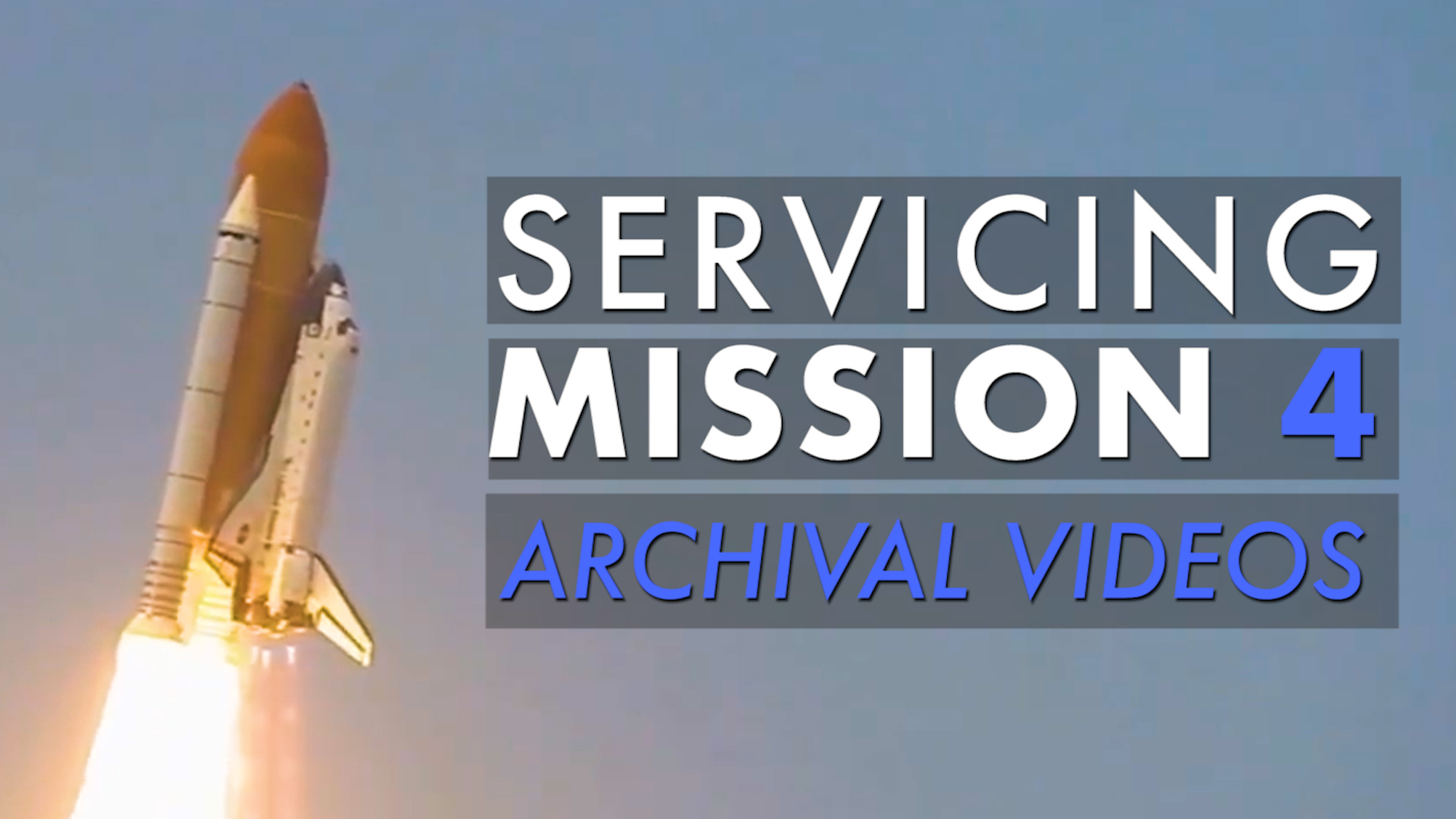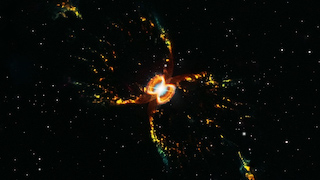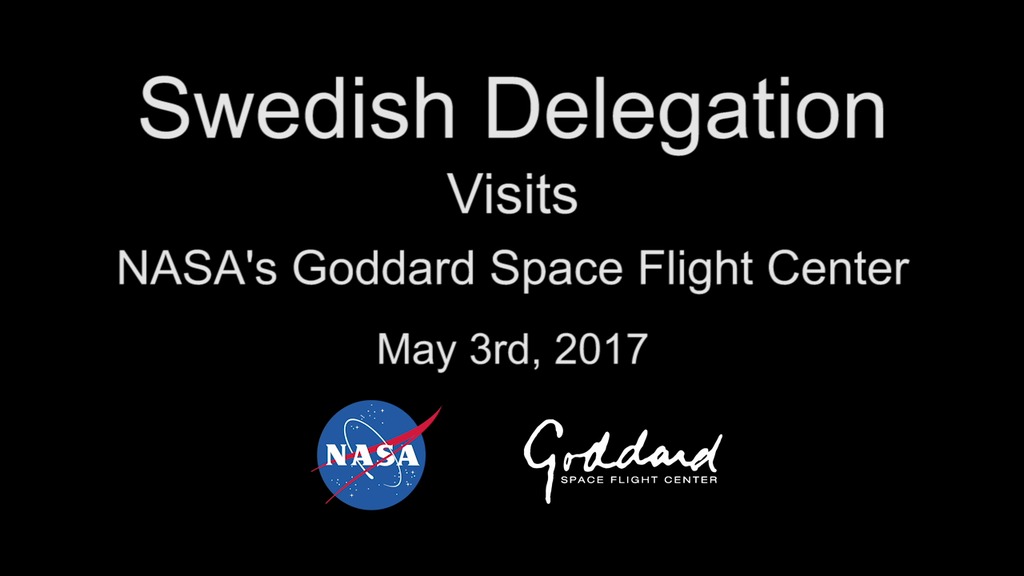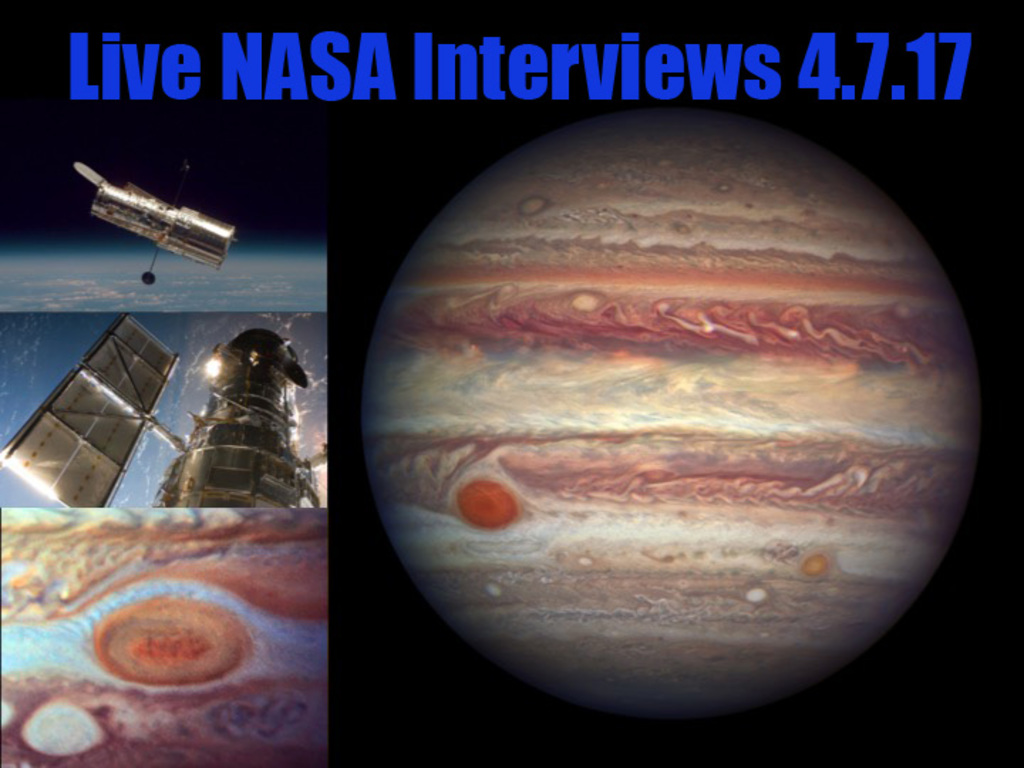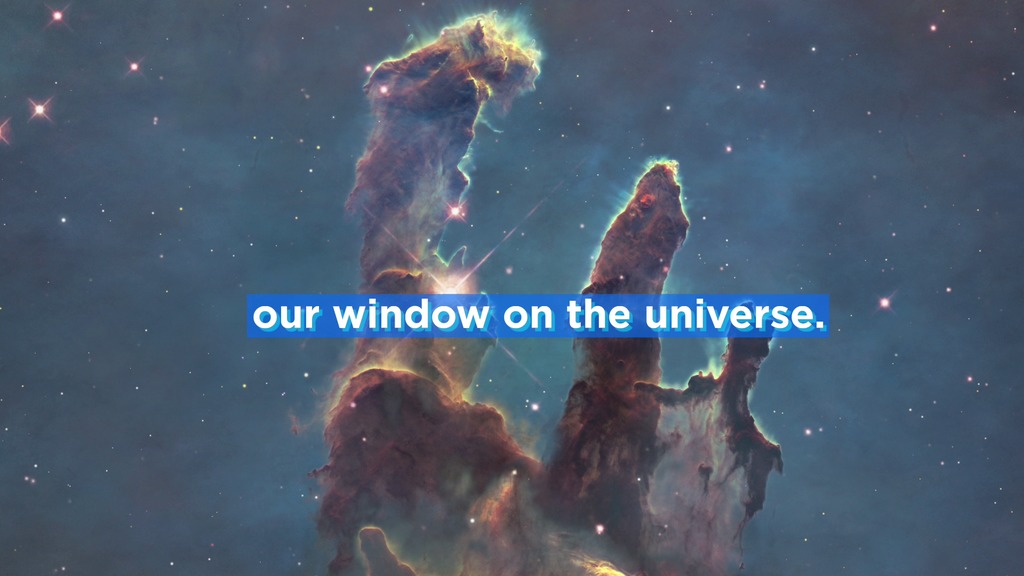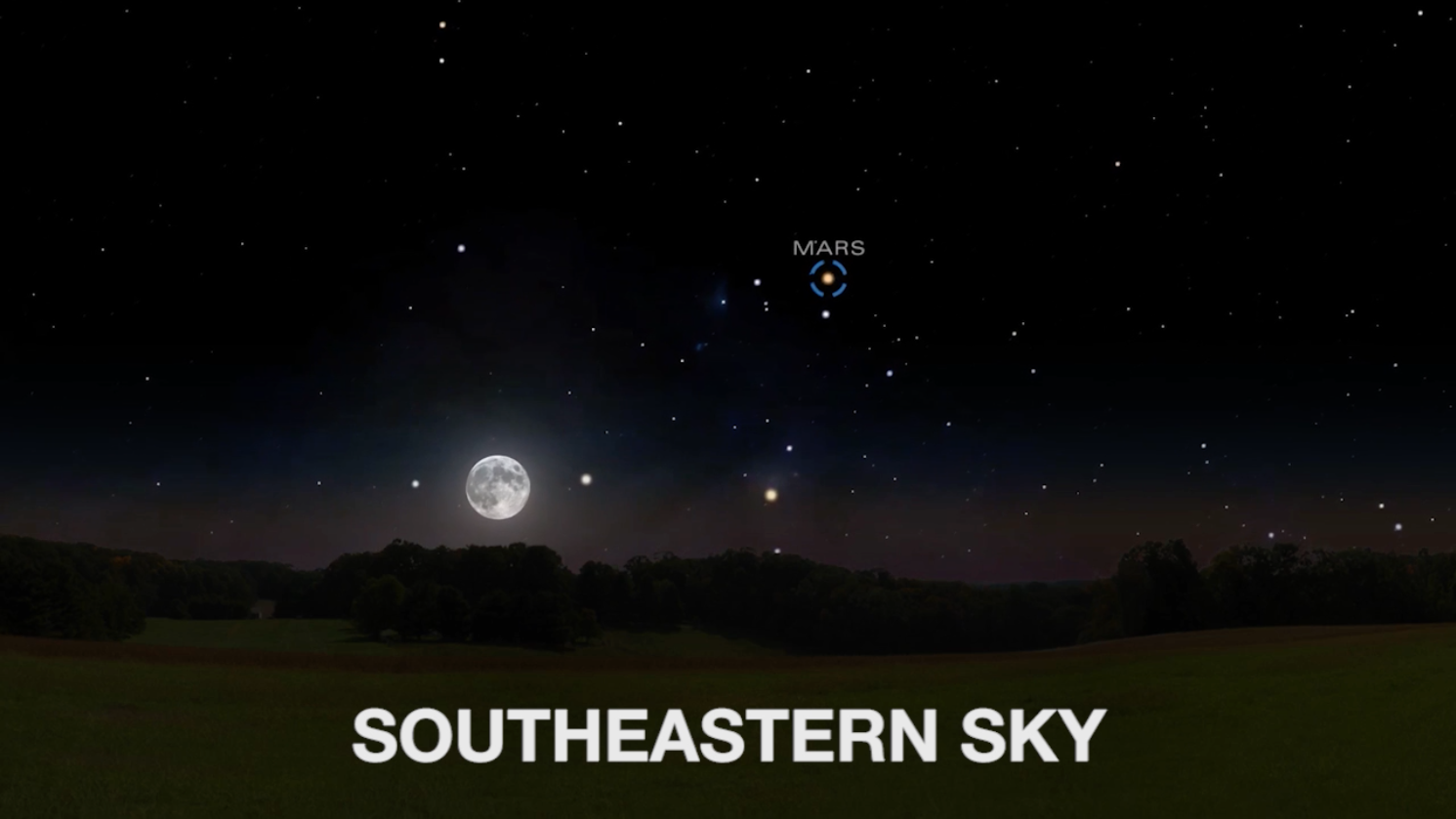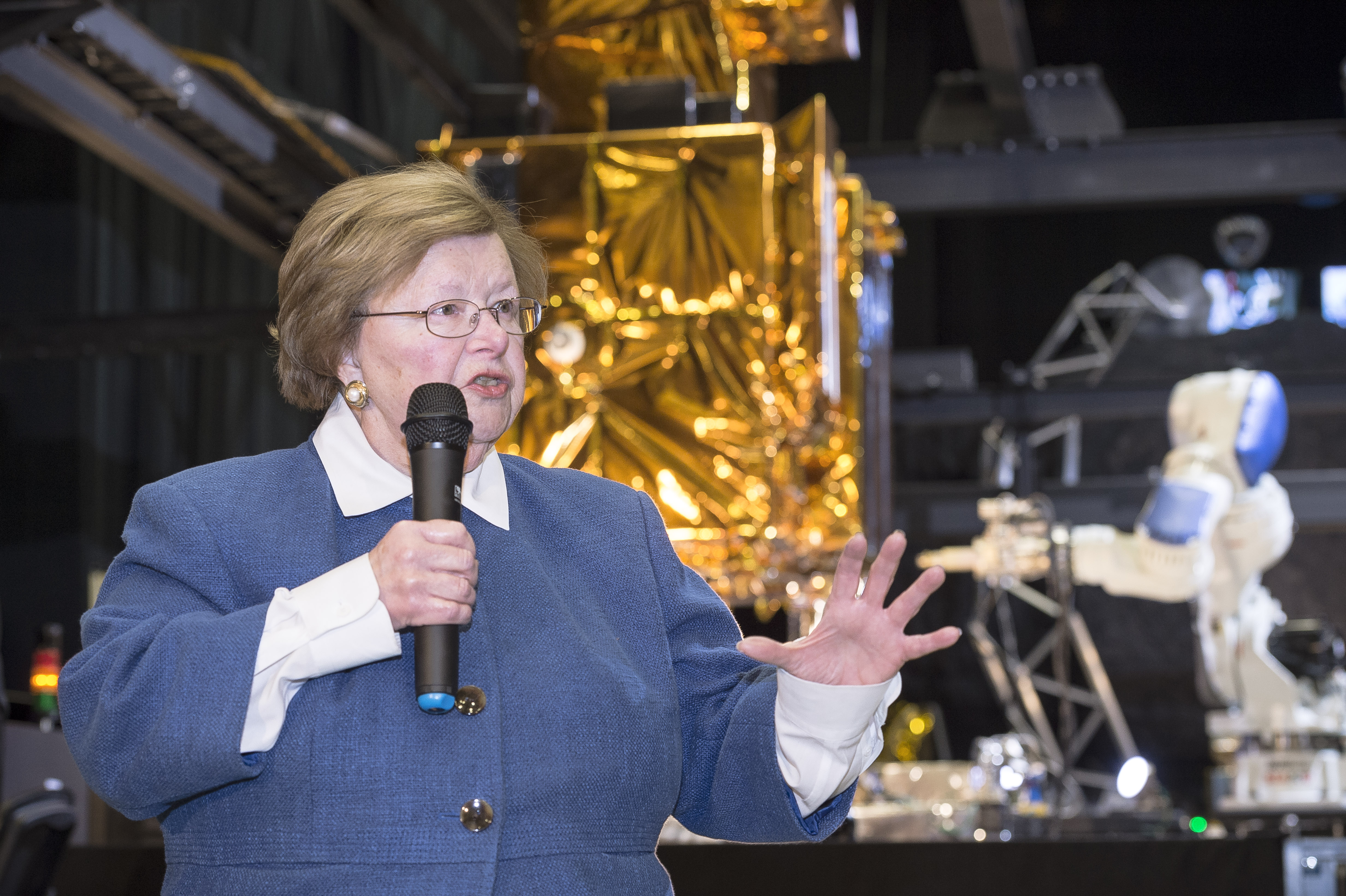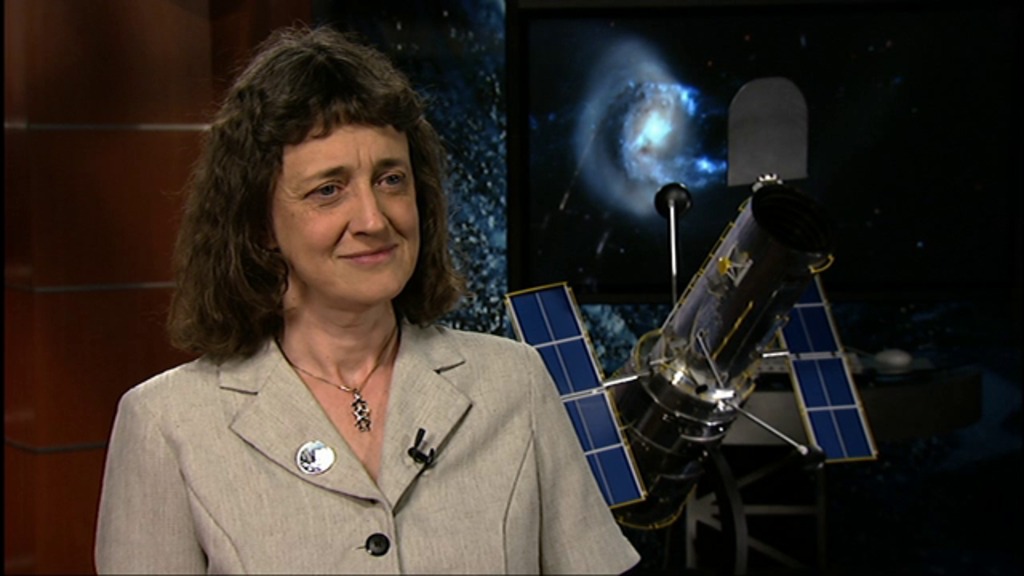Hubble's 25th Anniversary Resource B-Roll Collection
Best of Hubble Broll includes launch and deploy, and Extravehicular Activity.
Collection includes highlight reels from the launch of the Hubble Space Telescope on April 24, 1990, deployment and various b-roll of the servicing missions.
Servicing Mission Highlights from STS-82
Servicing Mission Highlights from STS-103
Servicing Mission Highlights from STS-109
Montage of Hubble Images.
Montage of Hubble Images.
Broll for Hubble 25th Anniversary Live Shots.
NASA HQ Resource Reel - 25th Anniversary of Hubble Space Telescope's Launch
00:51 - Upconverted 16mm film b-roll of the Hubble Space Telescope in cleanroom prior to launch of STS-31 in 1990
02:21 - Pre-launch b-roll of STS-125 astronauts conducting a training exercise in preparation for the mission at NASA's Neutral Buoyancy Laboratory near Johnson Space Center in Houston, Texas
03:36 - B-roll of NASA's Space Telescope Operations Control Center (STOCC), at Goddard Space Flight Center in Greenbelt, Md.
05:05 - Still image taken prior to Hubble's launch, shows engineers checking the quality of the telescope's main mirror
05:20 - Images of Galaxy M100 taken with the telescope's WFPC1 (before first servicing mission) and WFPC2 (after first servicing mission) that show the greatly improved image quality after the spherical aberration was corrected
05:47 - Various Hubble Space Telescope imagery - beauty shots animation; scientific animation; imagery of galaxies, stars, nebulae, etc.
16:11 - Highlights from STS-31, Hubble's launch on April 24, 1990
22:15 - Highlights from STS-61, Hubble Servicing Mission 1, December 1993
26:59 - Highlights from STS-82, Hubble Servicing Mission 2, February 1997
30:33 - Highlights from STS-103, Hubble Servicing Mission 3A, December 1999
32:24 - Highlights from STS-109, Hubble Servicing Mission 3B, March 2002
33:47 - Highlights from STS-125, Hubble Servicing Mission 4, May 2009
46:45 - Interview excerpts, Charles Bolden, NASA Administrator
49:18 - Interview excerpts, U.S. Senator Barbara A. Mikulski
51:02 - Interview excerpts, Edward J. Wiler, former NASA Associate Administrator for Science Mission Directorate
53:09 - Interview excerpts, John M. Grunsfeld, NASA Associate Administrator for Science Mission Directorate
54:24 - Interview excerpts, F. Story Musgrave, STS-61 Payload Commander
56:02 - Interview excerpts, Michael J. Massimino, former NASA astronaut
57:48 - Interview excerpts, K. Megan McArther, NASA Astronaut
For More Information
See the following sources:
Credits
Please give credit for this item to:
NASA's Goddard Space Flight Center
-
Editors
- Swarupa Nune (InuTeq)
- Michael McClare (HTSI)
-
Technical support
- Swarupa Nune (InuTeq)
-
Producers
- Michael McClare (HTSI)
- Michelle Handleman (USRA)
Missions
This page is related to the following missions:- Fermi Gamma-ray Space Telescope
- Herschel Space Observatory (Herschel)
- Hubble
- International Space Station
- James Webb Space Telescope (JWST)
- MESSENGER: Mercury, Surface, Space Environment, Geochemistry and Ranging
- Nancy Grace Roman Space Telescope
- Space Launch System (SLS)
- Space Shuttle
- Space Technology 5
- Space Technology 7 (ST-7) / LISA Pathfinder
- Spitzer Space Telescope (Spitzer)
- Wide-Field Infrared Survey Telescope (WFIRST)
Series
This page can be found in the following series:Release date
This page was originally published on Monday, April 20, 2015.
This page was last updated on Wednesday, May 3, 2023 at 1:49 PM EDT.

